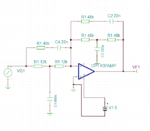- Joined
- Apr 1, 2011
- Messages
- 15,207
- Helped
- 2,901
- Reputation
- 5,814
- Reaction score
- 2,985
- Trophy points
- 1,393
- Location
- Minneapolis, Minnesota, USA
- Activity points
- 113,954
I have inexpensive Sony computer speakers, just about adequate to play my favorite music videos on Youtube. Sometimes the bass drum is heavy, and the speakers 'bottom out'. I can choose to turn off the speaker's 'bass boost' or I can reduce the volume. Neither is ideal, of course.
Windows Media Player has a parametric equalizer which I often use. It has individual adjustments, 31 Hz, 62 Hz, etc. This allows customized frequency response.
I wish there were an equalizer which intervenes between Youtube and the soundcard.
-----------------------------------------
There are other types of tone controls, eg., bass control which has 2 capacitors. A forum search on 'baxandall' will turn them up.
Windows Media Player has a parametric equalizer which I often use. It has individual adjustments, 31 Hz, 62 Hz, etc. This allows customized frequency response.
I wish there were an equalizer which intervenes between Youtube and the soundcard.
-----------------------------------------
There are other types of tone controls, eg., bass control which has 2 capacitors. A forum search on 'baxandall' will turn them up.
